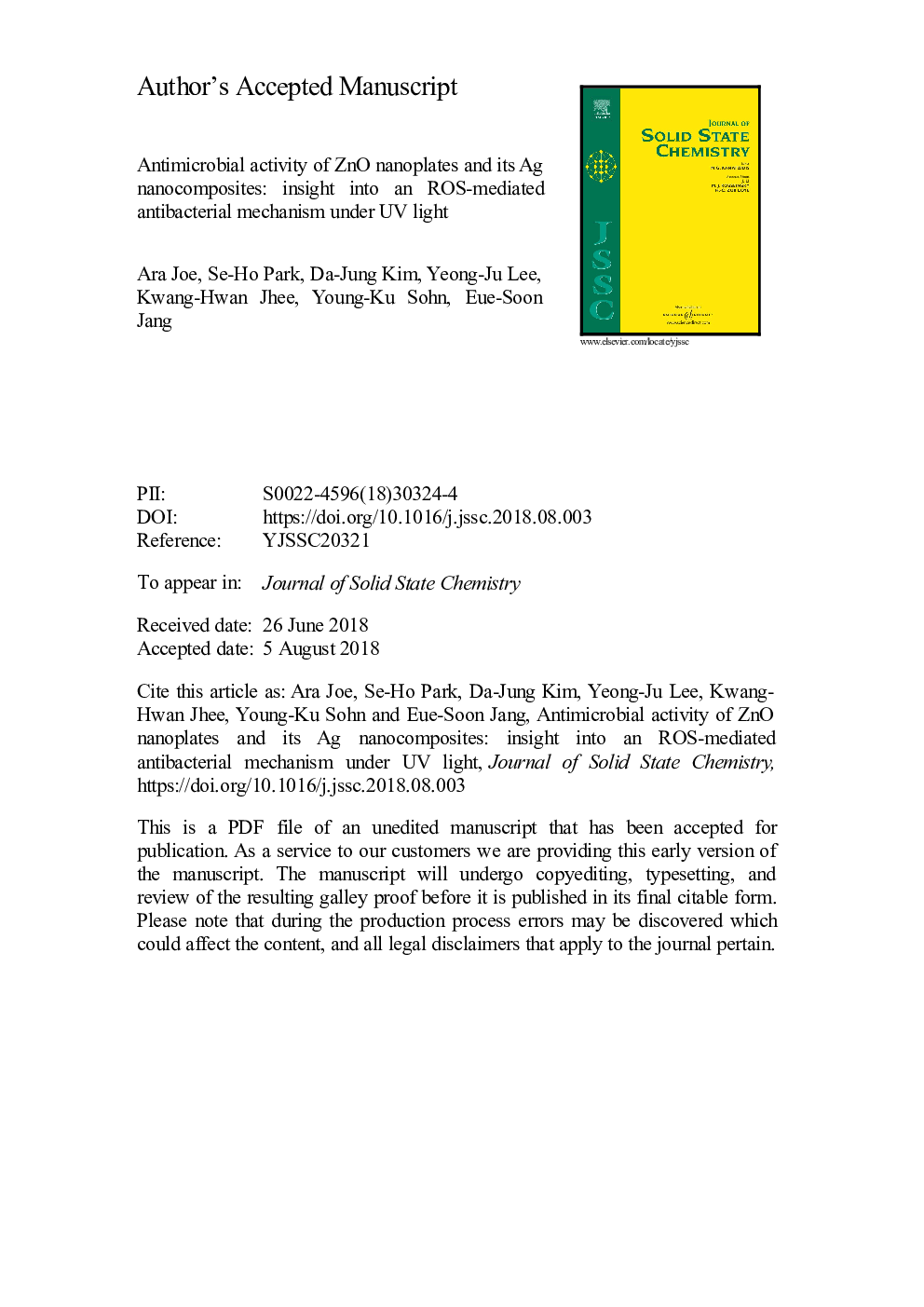| Article ID | Journal | Published Year | Pages | File Type |
|---|---|---|---|---|
| 9953344 | Journal of Solid State Chemistry | 2018 | 28 Pages |
Abstract
We have previously shown that the bactericidal effect of ZnO nanoparticles in the absence of a light source originates from the released Zn2+ ions. The purpose of this study was to explore antibacterial activity arising from photo-induced reactive oxygen species (ROS) of ZnO nanoparticles under UV-A light irradiation. To achieve this, S. aureus and K. pneumoniae bacteria were exposed to three different ZnO nanoparticles under UV-A light. The concentrations of the ZnO nanoparticles were low, such that the antibacterial effect of the dissolved Zn2+ ions was negligible. From various empirical evidence, we found that the oxygen defects of the ZnO crystals enhanced the photogeneration of ROS and consequently, the ZnO nanoplates (NPs) with the polar facets exhibited the most pronounced antibacterial activity under UV-A stimulation. To enhance the antimicrobial activity of the NPs, we successfully synthesized silver-nanoparticle-decorated ZnO NPs and explored their antibacterial activity compared to that of the NPs.
Related Topics
Physical Sciences and Engineering
Chemistry
Inorganic Chemistry
Authors
Ara Joe, Se-Ho Park, Da-Jung Kim, Yeong-Ju Lee, Kwang-Hwan Jhee, Youngku Sohn, Eue-Soon Jang,
